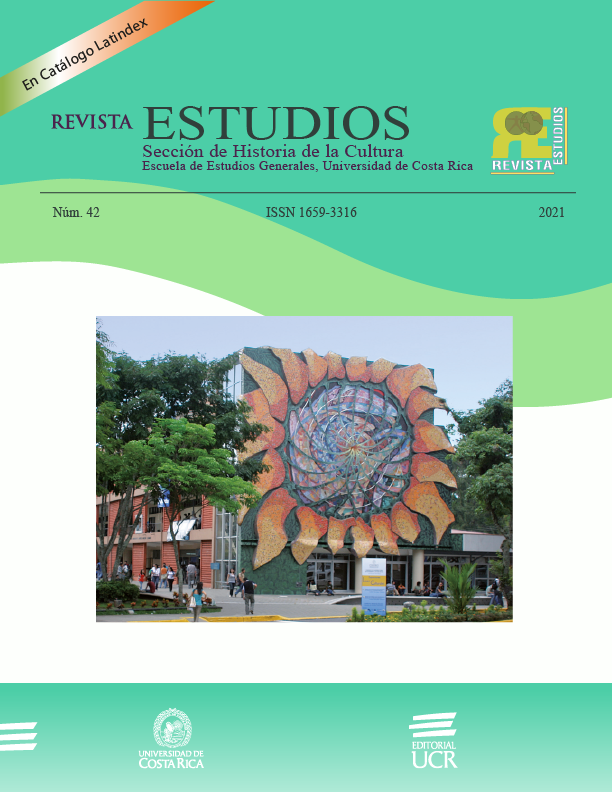Abstract
Music is a cultural product that seeks to delight and provoke feelings to those who listen. This is why this article pretends to demonstrate that the education of new musicians is an holistic process in which technique competes with the development of skills that improve sound and performance. This article, through a literature review, discusses novel music teaching methods, which focus on integrality, where the teacher intervenes on several levels: sensory, postural, cognitive, motor and emotional. It also assesses Feldenkrais method as a practical approach to this integral vision and the role of the accompanist on musical performance optimization. Finally, it analyzes the pertinence of these new methods and the benefits they bring along, from examples obtained in the professional practice as a teacher in the University of Costa Rica’s School of Musical Arts.
References
Ahmadi, S. A. A., Sarlak, M. A., Mahdavi, M., Daraei, M. R., & Vahidi, T. (2012). The role of social capital on improving the talent management at the Southern Khorasan Electric Energy Distribution Company. International Business Management, 6(2), 233-241.
Bernardi, L., Porta, C., Casucci, G., Balsamo, R., Bernardi, N., Fogari, R. y Sleight, P. (2009). Dynamic Interactions Between Musical, Cardiovascular, and Cerebral Rhythms in Humans. Circulation, 119, 3171-3180.
Brown, J. (2011). In the zone: An autoethnographic study exploring the links between flow and mindfulness for a piano accompanist. Studies in Learning, Evaluation, Innovation and Development, 8(2), 83-95.
Csikszentmihalyi, M. (2013). 8 Ways to Create Flow. Positive Psychology. Recuperado de https://positivepsychology.com/mihaly-csikszentmihalyi-father-of-flow/
Duke, R. A. (2010). Intelligent Music Teaching: Essays on the Core Principles of Effective Instruction. Texas: Learning and Behavior Resources.
Educación Sensoriomotriz para Músicos. (s.f.). ¿Cómo puede ayudar a los músicos el método Feldenkrais? Recuperado de http://educacionsensomotriz.jimdo.com/c%C3%B3mo-puede-ayudar-a-los-m%C3%BAsicos-el-m%C3%A9todo-feldenkrais/
Feldenkrais Barcelona. (s.f.). Método Feldenkrais. Recuperado de http://feldenkraisbarcelona.net/metodo-feldenkrais/
Feldenkrais, M. (1980). Autoconciencia por el movimiento – Ejercicios para el desarrollo personal. Buenos Aires: Editorial Paidós.
Feldenkrais, M. (1993). El poder del yo – La autotransformación a través de la espontaneidad. Barcelona/Buenos Aires: Editorial Paidós.
Feldenkrais Method testimonials. (s.f.). The Feldenkrais Store, Al Wadleigh. Recuperado de https://achievingexcellence.com/feldenkrais-method-testimonials/
Foucault, M. (2008). Tecnologías del yo. Barcelona: Editorial Paidós,
Kiik-Salupere, V. y Ross, J. (2011). Tripartite unity: What students expect from their teacher and accompanist during individual singing lessons. Trames, 15(4), 404-421.
Gagné, F. (2004). Transforming gifts into talents: The DMGT as a developmental theory. In N. Colangelo & G. Davis (Eds.. Handbook of gifted education (3rd ed., pp. 60–74). Boston, MA: Allyn & Bacon.
Justel, N y Díaz, V. (2012). Plasticidad cerebral: participación del entrenamiento musical. Suma psicológica, 19(2), 97-108
Klein-Vogelbach, S., Lahme, A. y Spirgi-Gantert, I. (2010). Interpretación Musical y Postura Corporal. Madrid: Ediciones Akal, S.A.
Müller, V. y Lindenberger, U. (2011). Cardiac and Respiratory Patterns Synchronize between Persons during Choir Singing. Revista PloSONE. 6(9), 1-15.
Ramos, P. (2013). La validez y la eficacia de los ejercicios respiratorios para reducir la ansiedad escénica en el aula de música. Revista Internacional de Educación Musical, 1, 23-29.
Ramírez, M. (2015). ¿Instrumentistas o pedagogos? Recuperado de http://socialmusik.es
Rojas, D. (1990). El maestro y la enseñanza de la música. Revista Educación y Pedagogía, 1(4), 65-69.
Romero, F. (2007). El equilibrio del músico. Revista Musicalia, 5, 1-5.
Soria-Urios, G., Duque, P. y García-Moreno, J. (2011). Música y cerebro: Fundamentos neurocentíficos y trastornos musicales. Revista de Neurología, 52, 45-55.
Wristen, B. (2005). Cognition and Motor Execution in Piano Sight-Reading: A Review of Literature. UPDATE: Applications of Research in Music Education. 24(1), 45-56.


